
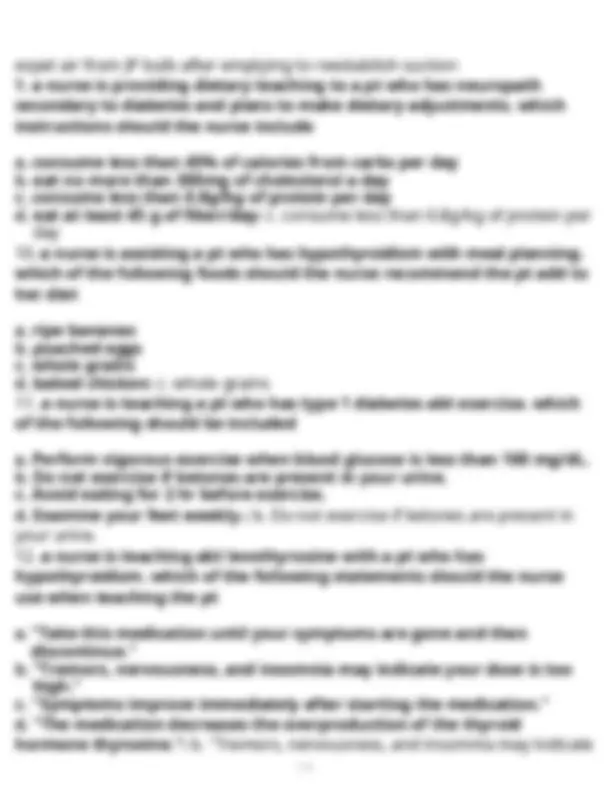
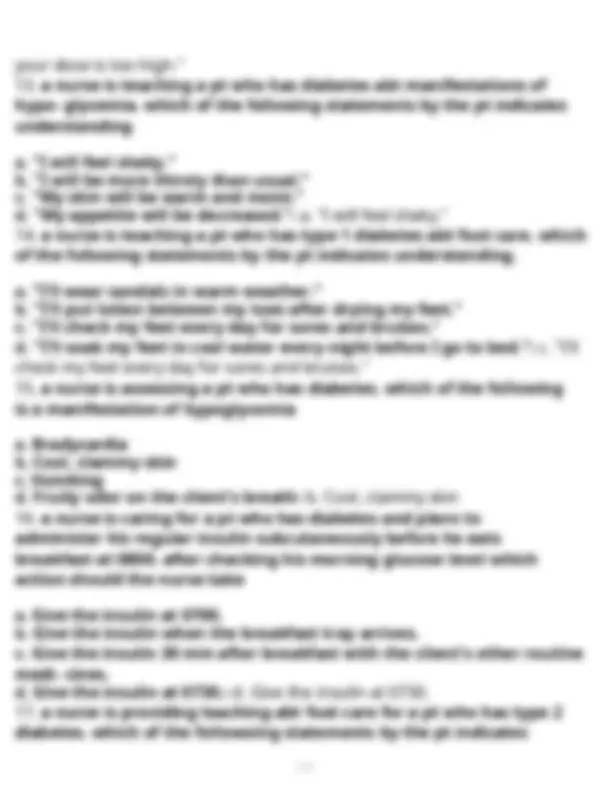
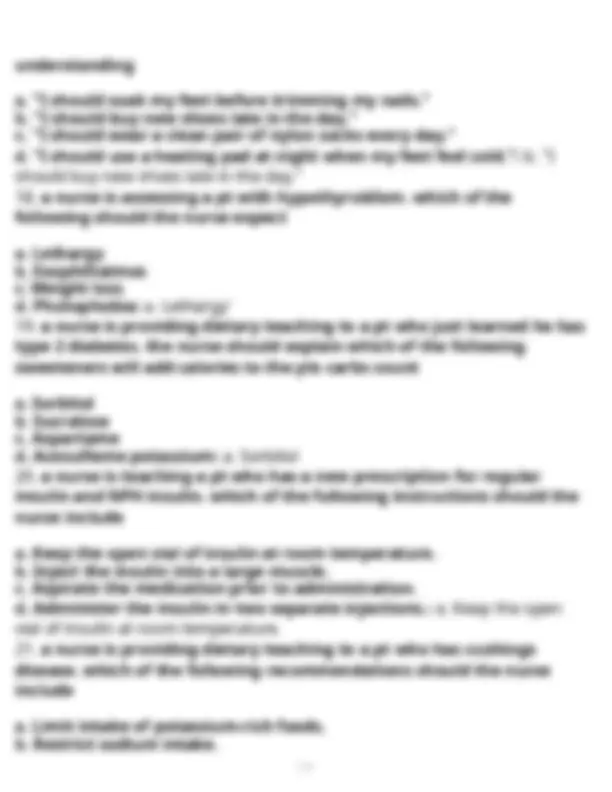
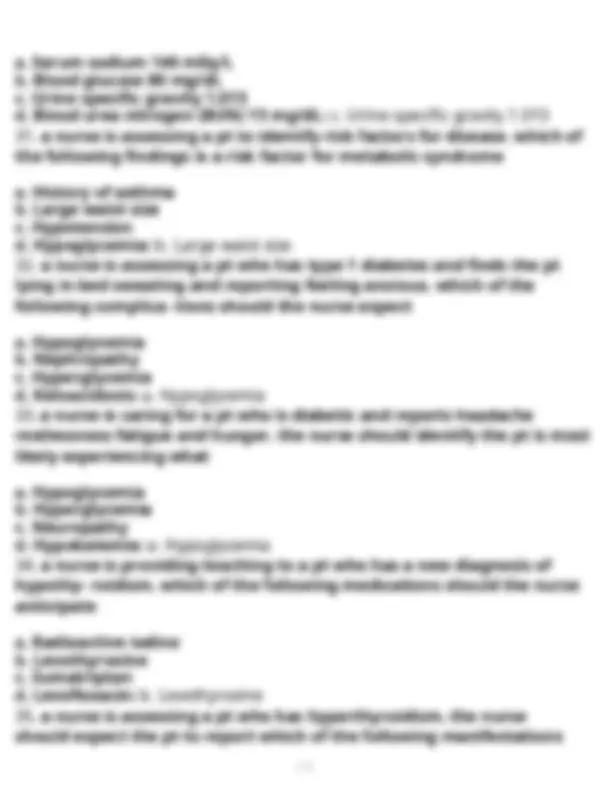
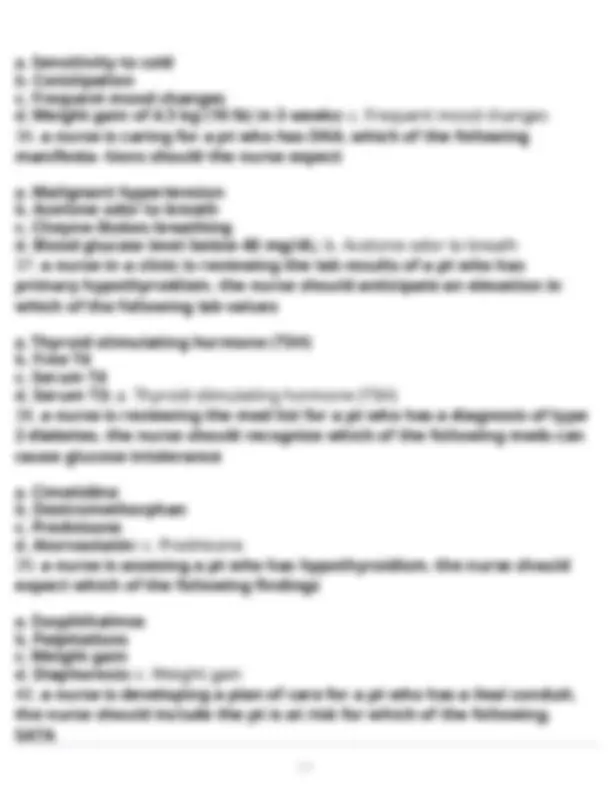
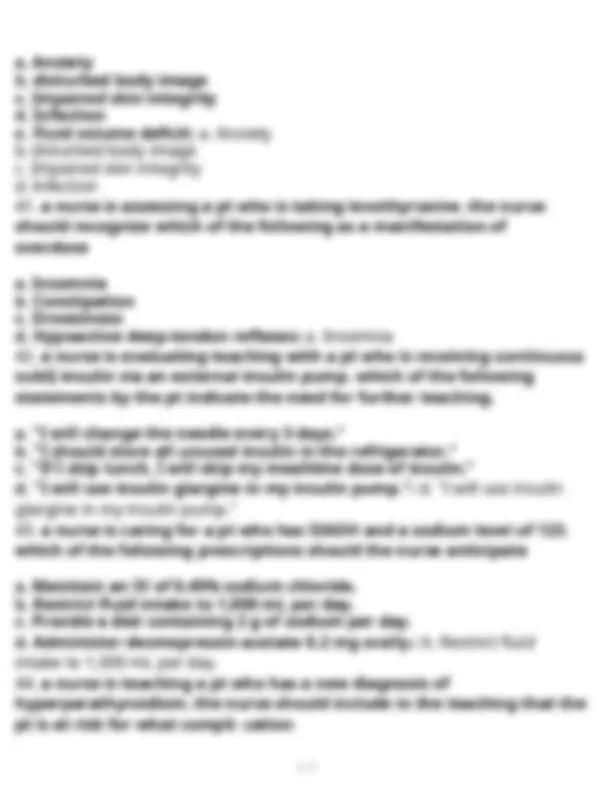
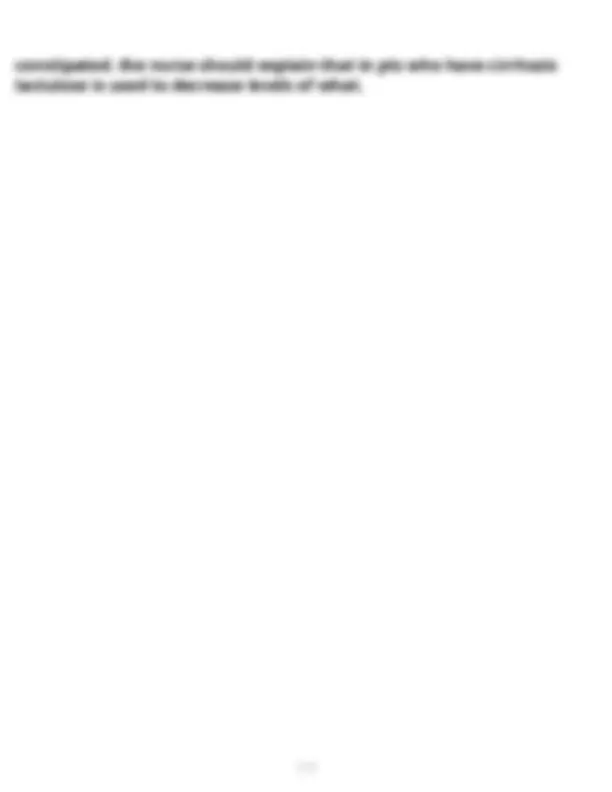
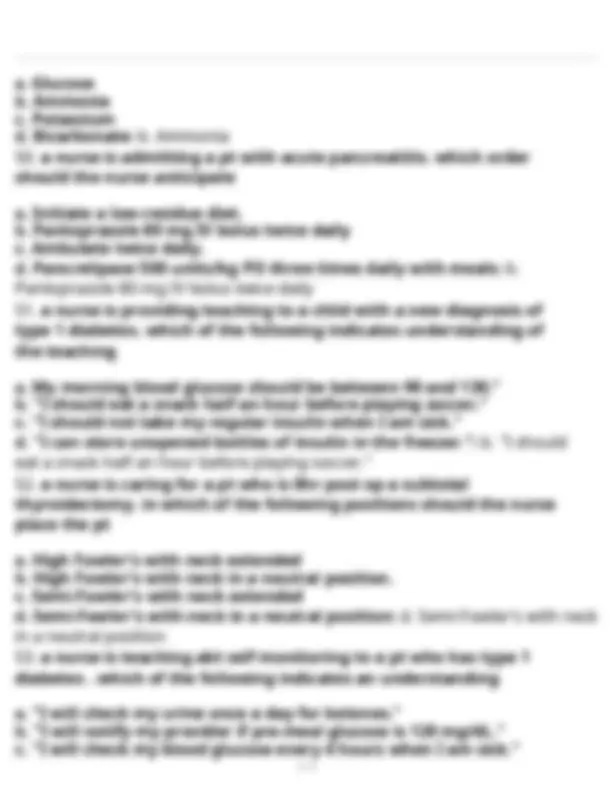
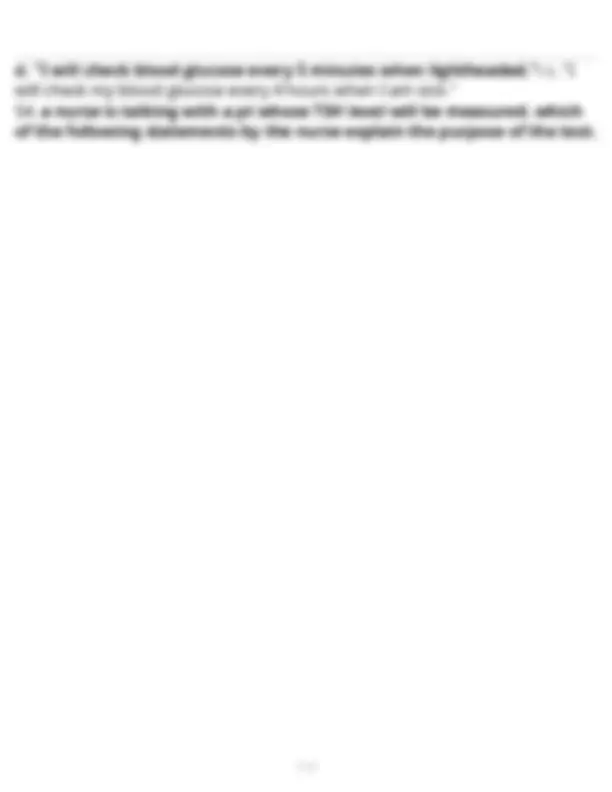
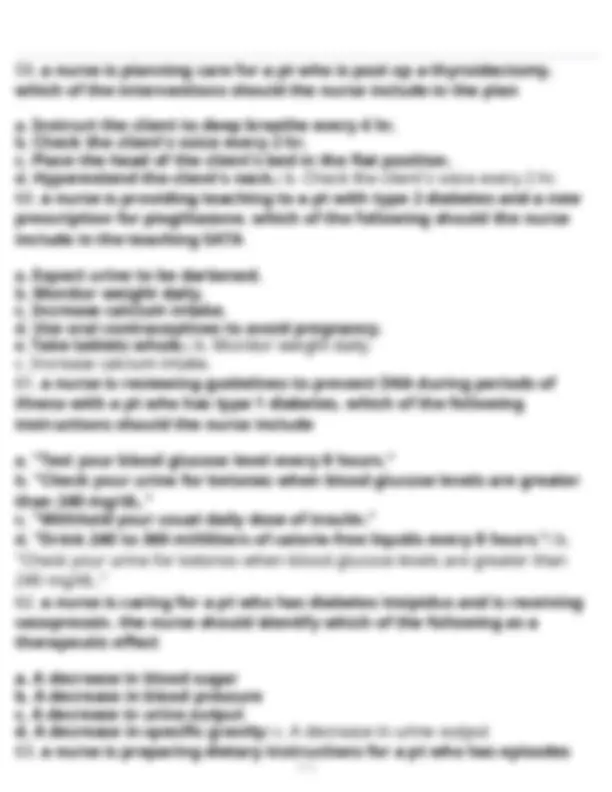
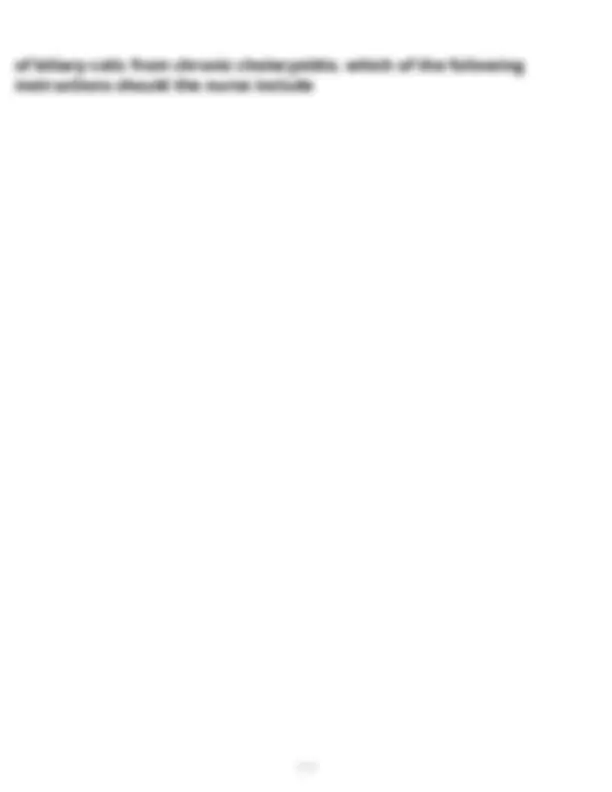
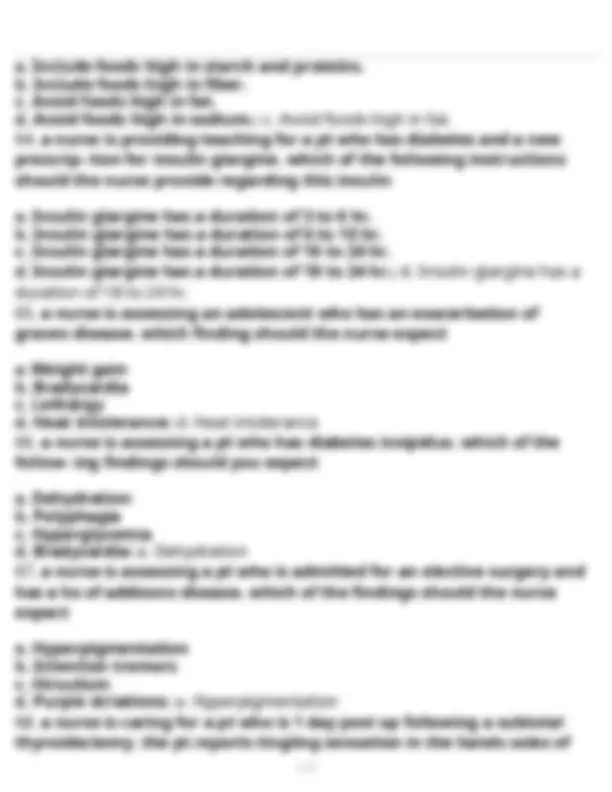
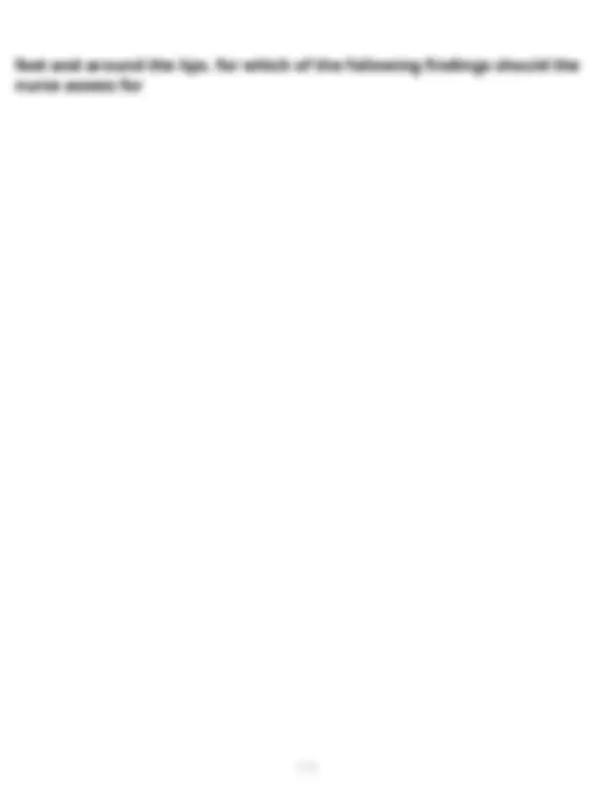
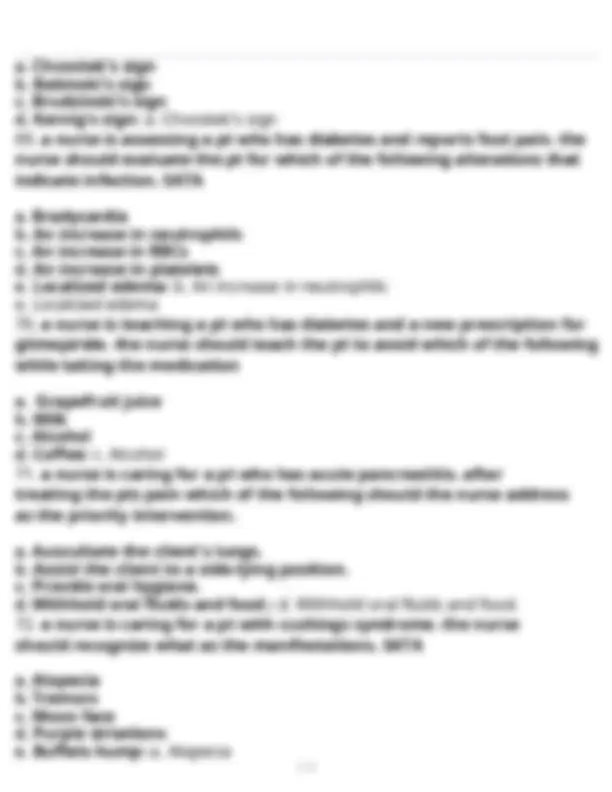
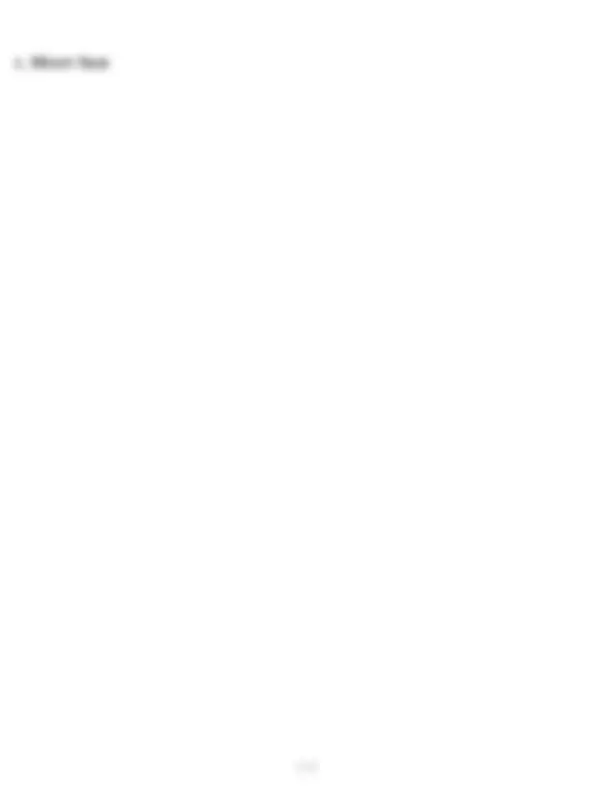
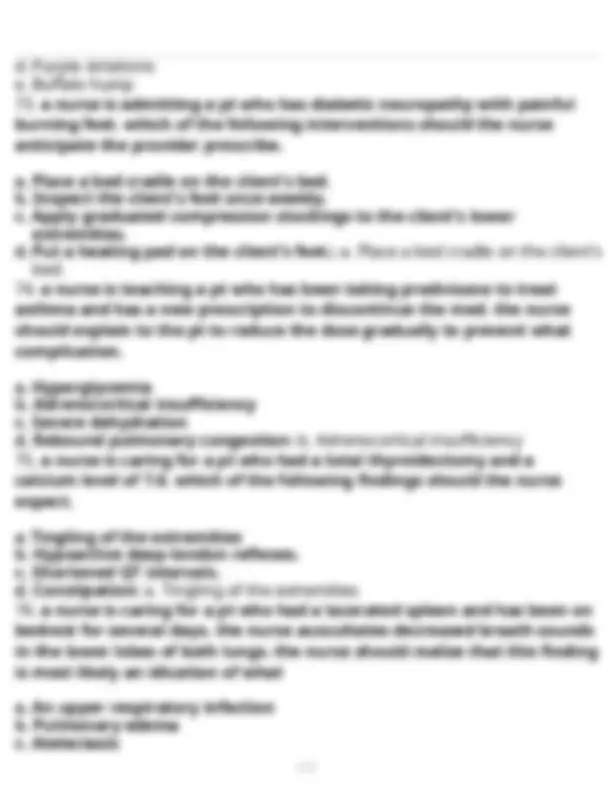
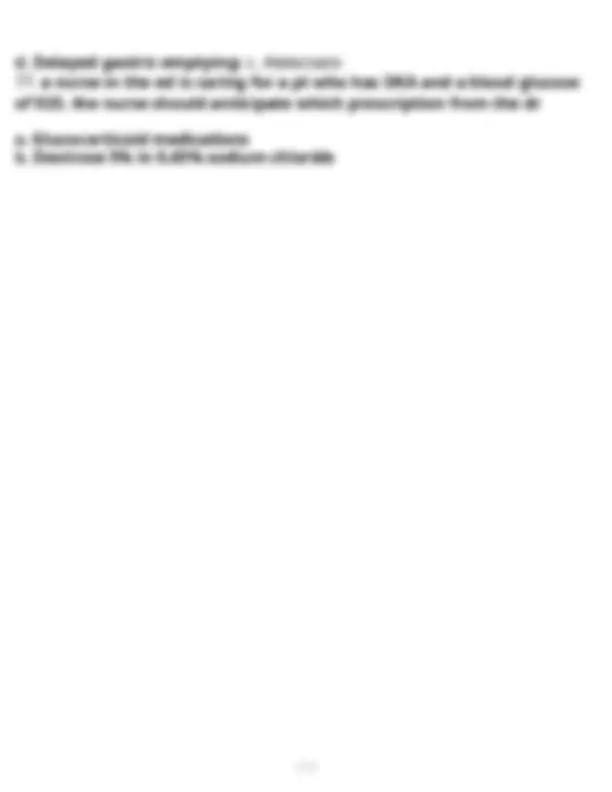
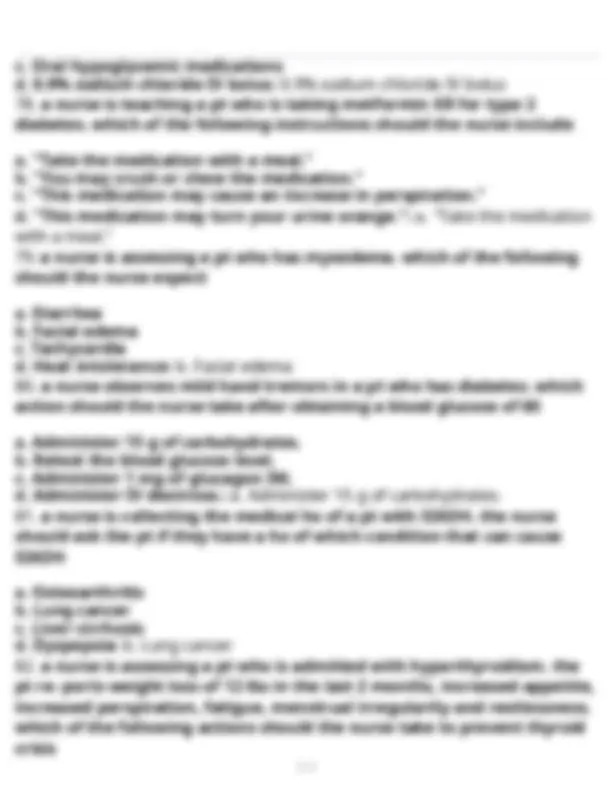
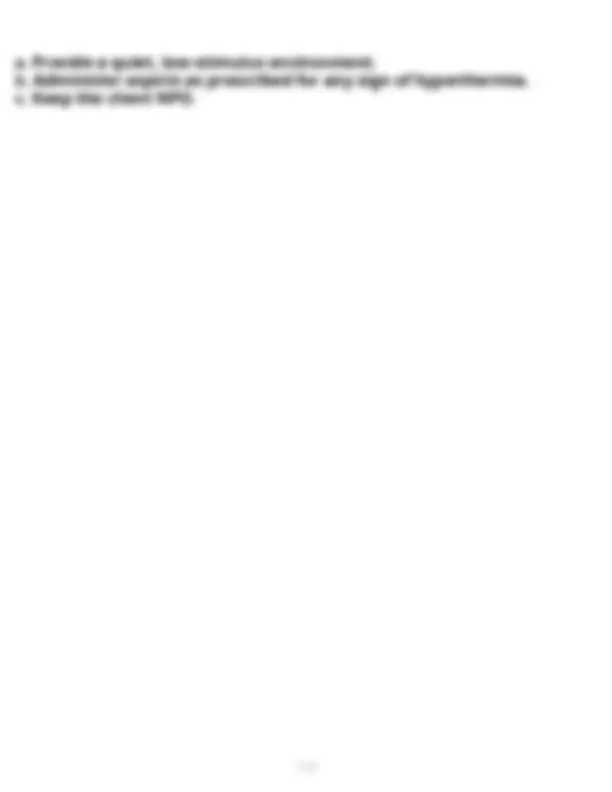
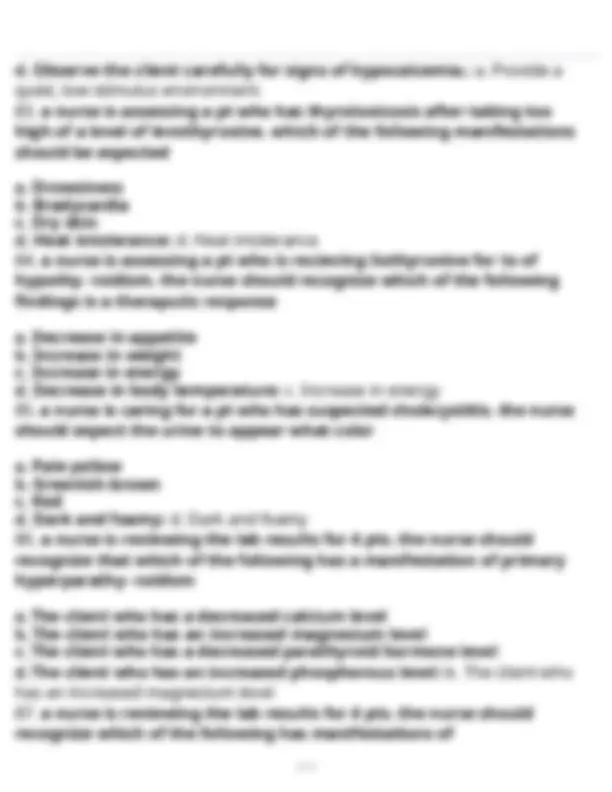
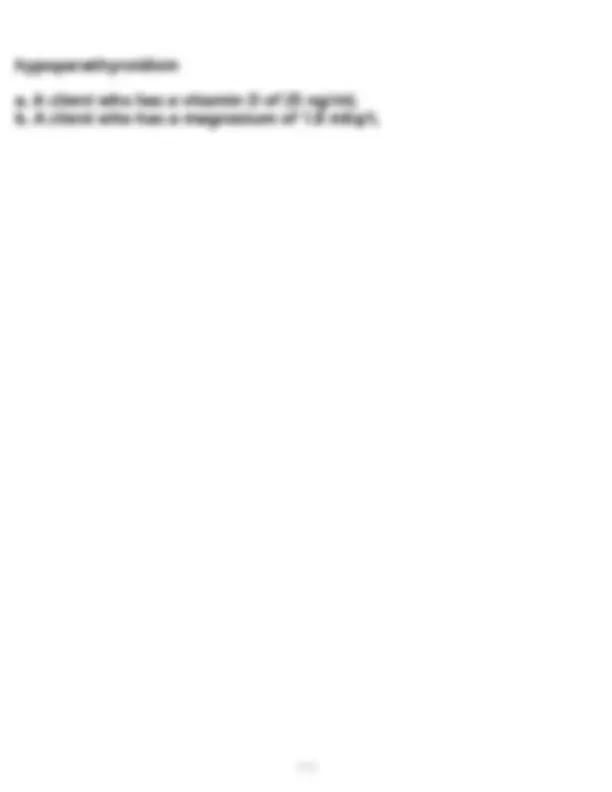
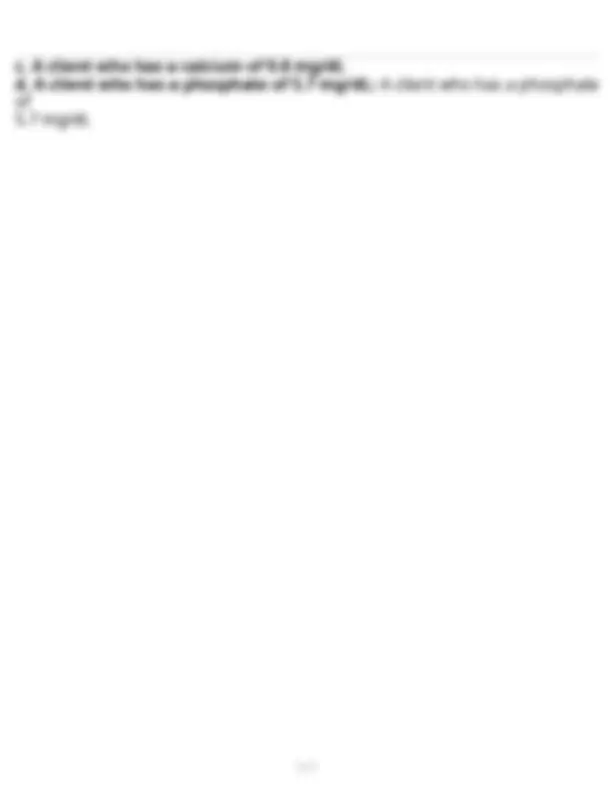


Study with the several resources on Docsity

Earn points by helping other students or get them with a premium plan


Prepare for your exams
Study with the several resources on Docsity

Earn points to download
Earn points by helping other students or get them with a premium plan
Community
Ask the community for help and clear up your study doubts
Discover the best universities in your country according to Docsity users
Free resources
Download our free guides on studying techniques, anxiety management strategies, and thesis advice from Docsity tutors
Exam 3 ATI online questions updated 100% accurate solutions complete /revised
Typology: Exams
1 / 30

This page cannot be seen from the preview
Don't miss anything!























d. overproduction of parathormone by the parathyroid gland: b. lack of produc- tion of aldosterone by the adrenal gland
your dose is too high."
understanding a. "I should soak my feet before trimming my nails." b. "I should buy new shoes late in the day." c. "I should wear a clean pair of nylon socks every day." d. "I should use a heating pad at night when my feet feel cold.": b. "I should buy new shoes late in the day."
imbalances should the nurse monitor for a. Hypermagnesemia b. Hypokalemia c. Hyperkalemia d. Hypomagnesemia: b. Hypokalemia
a. Serum sodium 146 mEq/L b. Blood glucose 80 mg/dL c. Urine specific gravity 1. d. Blood urea nitrogen (BUN) 15 mg/dL: c. Urine specific gravity 1.
a. Anxiety b. disturbed body image c. Impaired skin integrity d. Infection e. Fluid volume deficit: a. Anxiety b. disturbed body image c. Impaired skin integrity d. Infection
a. Impaired skin integrity b. Fluid retention
constipated. the nurse should explain that in pts who have cirrhosis lactulose is used to decrease levels of what.
a. Glucose b. Ammonia c. Potassium d. Bicarbonate: b. Ammonia
a. This test measures the amount of thyroid hormone that attaches to a protein in your blood." b. "This test detects antithyroid antibodies in your blood." c. "This test measures the absorption of iodine and how it relates to the thyroid gland." d. "This test determines whether your thyroid gland is overactive, appropriate- ly active, or underactive.": d. "This test determines whether your thyroid gland is overactive, appropriately active, or underactive."
b. Hypotension c. Diaphoresis d. Hyperpigmentation: d. Hyperpigmentation
of biliary colic from chronic cholecystitis. which of the following instructions should the nurse include
a. Include foods high in starch and proteins. b. Include foods high in fiber. c. Avoid foods high in fat. d. Avoid foods high in sodium.: c. Avoid foods high in fat.